Browserless
How to Load Browser Extensions in Nstbrowser Docker?
Learn 2 methods for uploading extensions in Nstbrowser and the steps to launch them in Docker.
Mar 19, 2025Carlos Rivera
🔊 A browser extension is a small add-on that runs on mainstream browsers (such as Chrome, Firefox, Edge, etc.), designed to provide users with additional functionalities and an enhanced browsing experience. By integrating with the browser, they can extend the browser's native capabilities to meet users' personalized needs in various scenarios.
What is Nstbrowser?
Nstbrowser is a powerful anti-detection fingerprint browser specifically designed for multi-account management and web automation tasks.
It creates authentic browser fingerprints, providing users with isolated environments for efficient multi-account operations and anonymous browsing. It includes cloud-synced data and supports browser extensions.
What is Nstbrowser Docker?
Nstbrowser Docker is a Docker container image built on the core components of Nstbrowser. As long as you have a Docker environment locally, you can use Nstbrowser to complete your browser automation tasks at any time. Nstbrowser Docker shares account data with Nstbrowser, allowing you to run it with just one configuration.
Below, we will explain how to load your browser extensions in Nstbrowser Docker.
Step-by-Step: Load Browser Extensions in Nstbrowser Docker
Before proceeding with the steps, ensure you have an Nstbrowser account to run the process.
You can register on our client.
Step 1: Upload the Extension to the Client
There are two methods to upload extensions to the client. You can choose either based on your preference.
Upload via Official Extension Link
- Search for the extension you need in the browser's extension store.
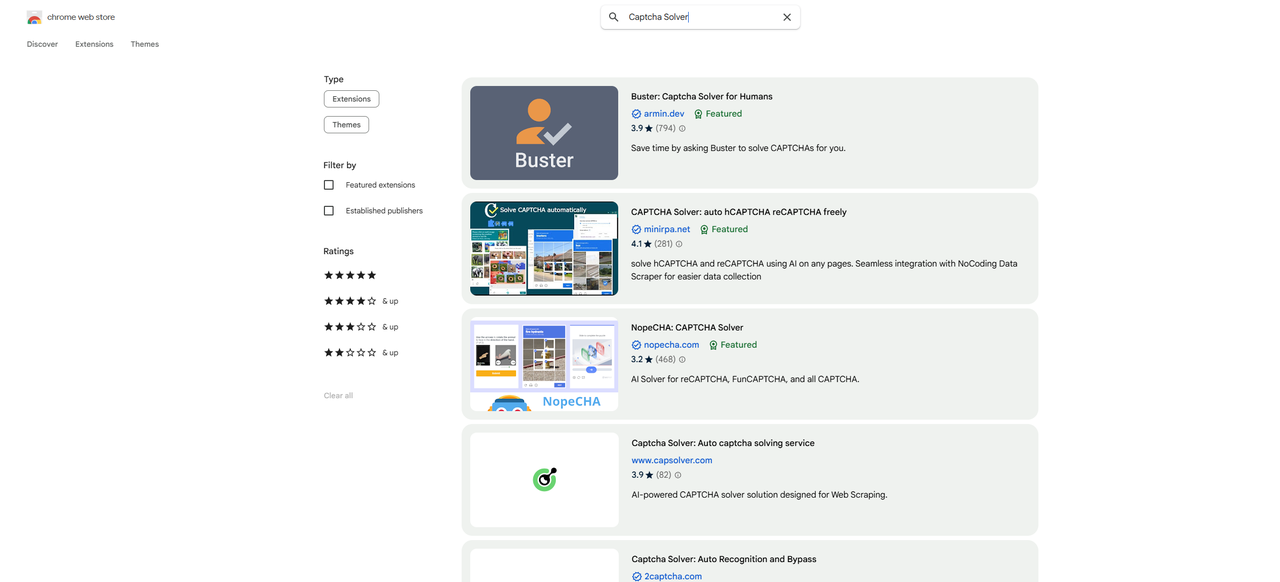
- Copy the extension link.
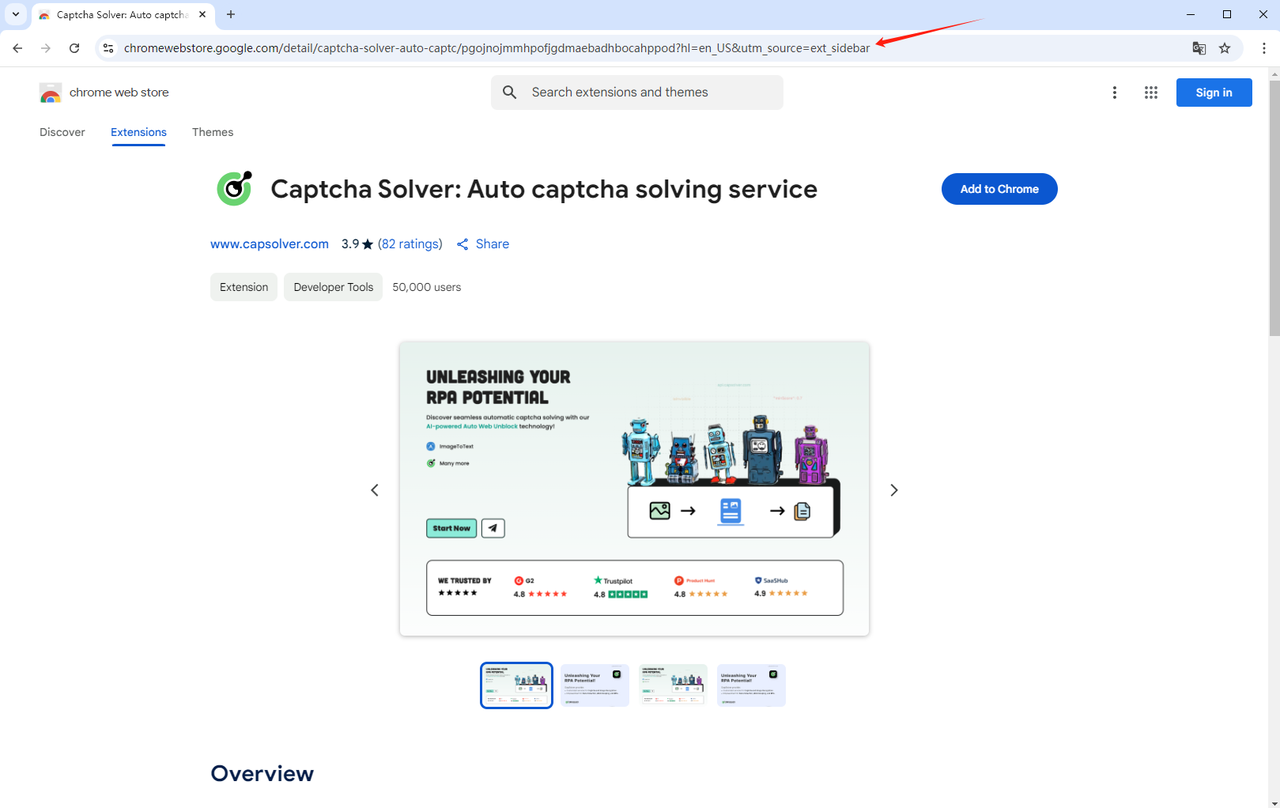
- Paste the link into the creation window.
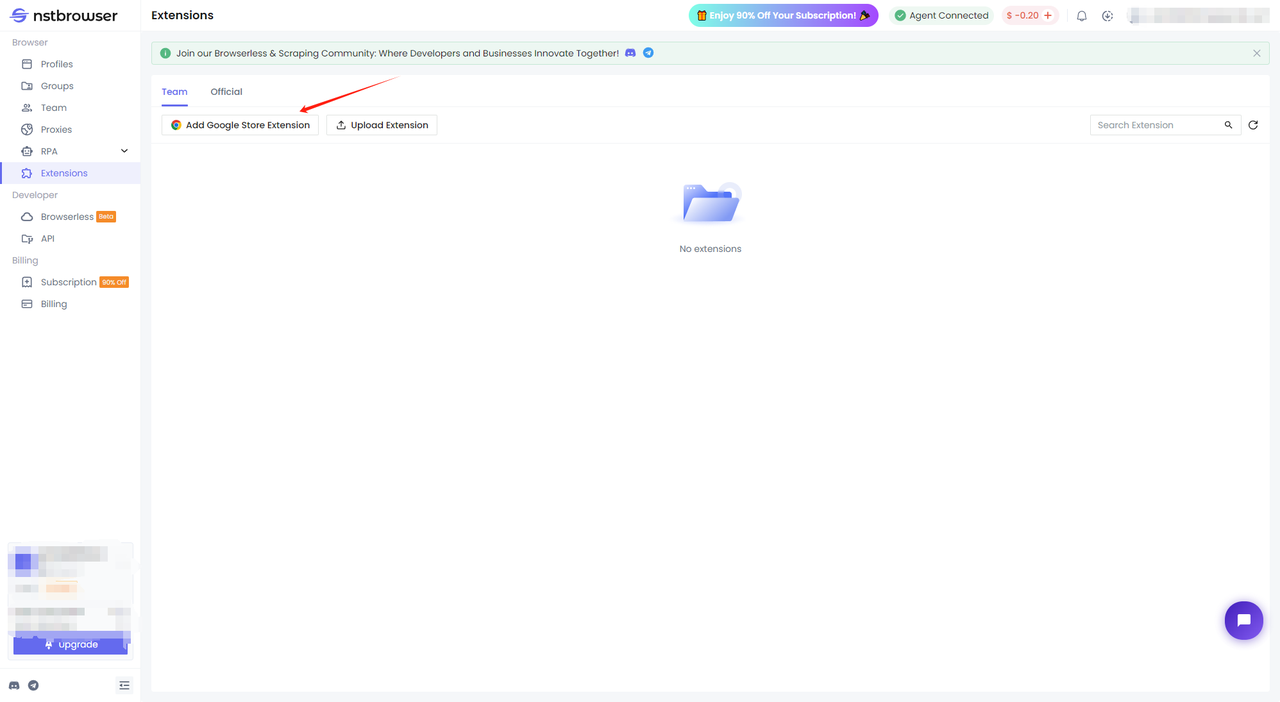
- Confirm if it is the extension you want to use.
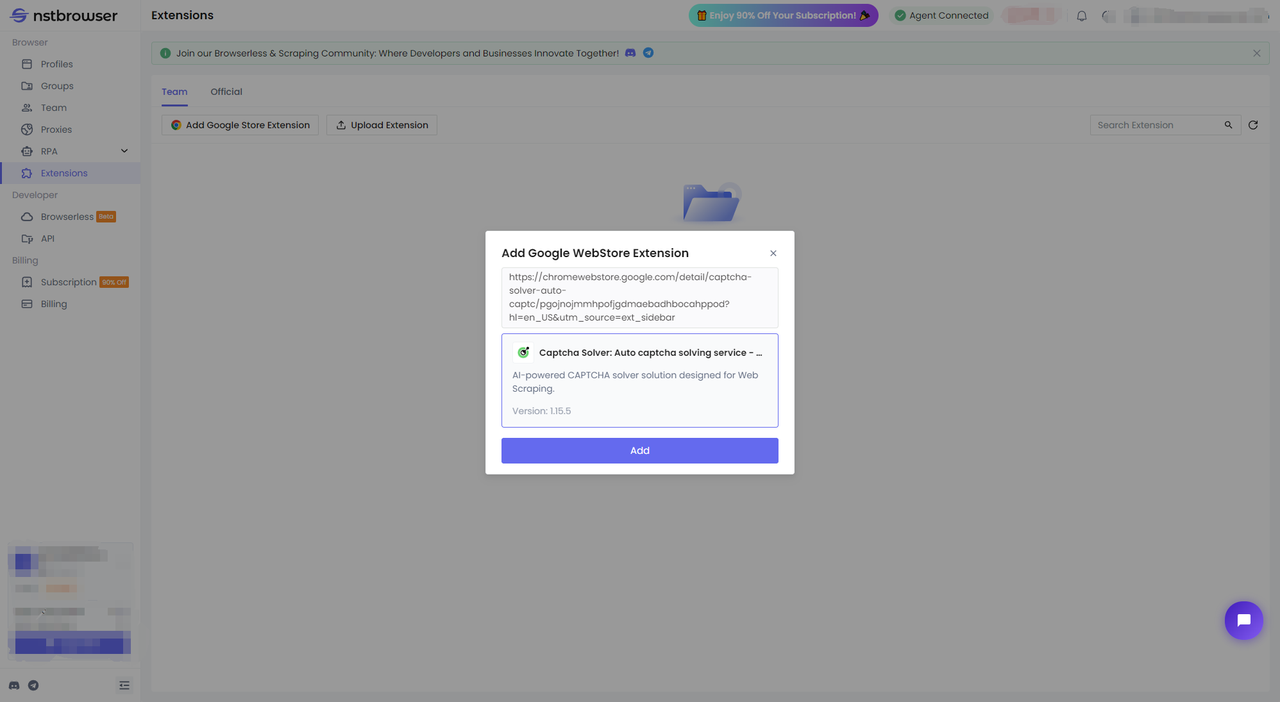
- After uploading, you can view your extension on the team page.
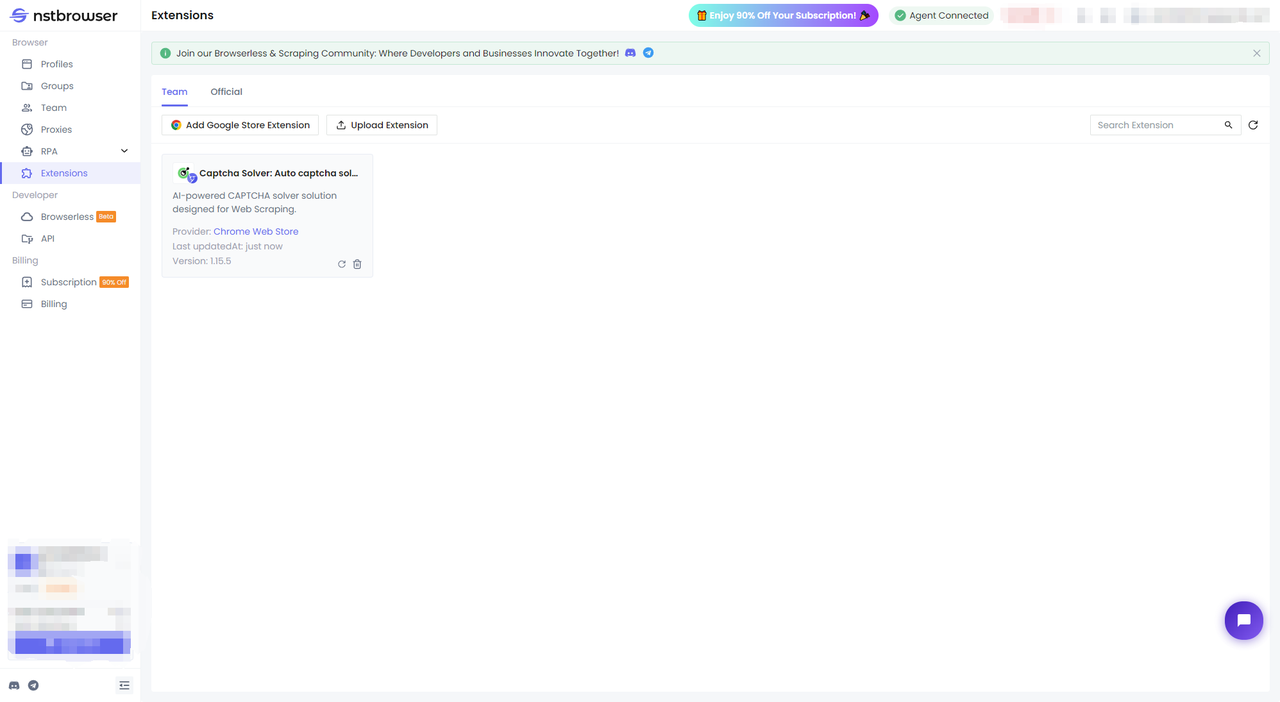
Upload via Compressed File
- Access the compressed file upload entry.
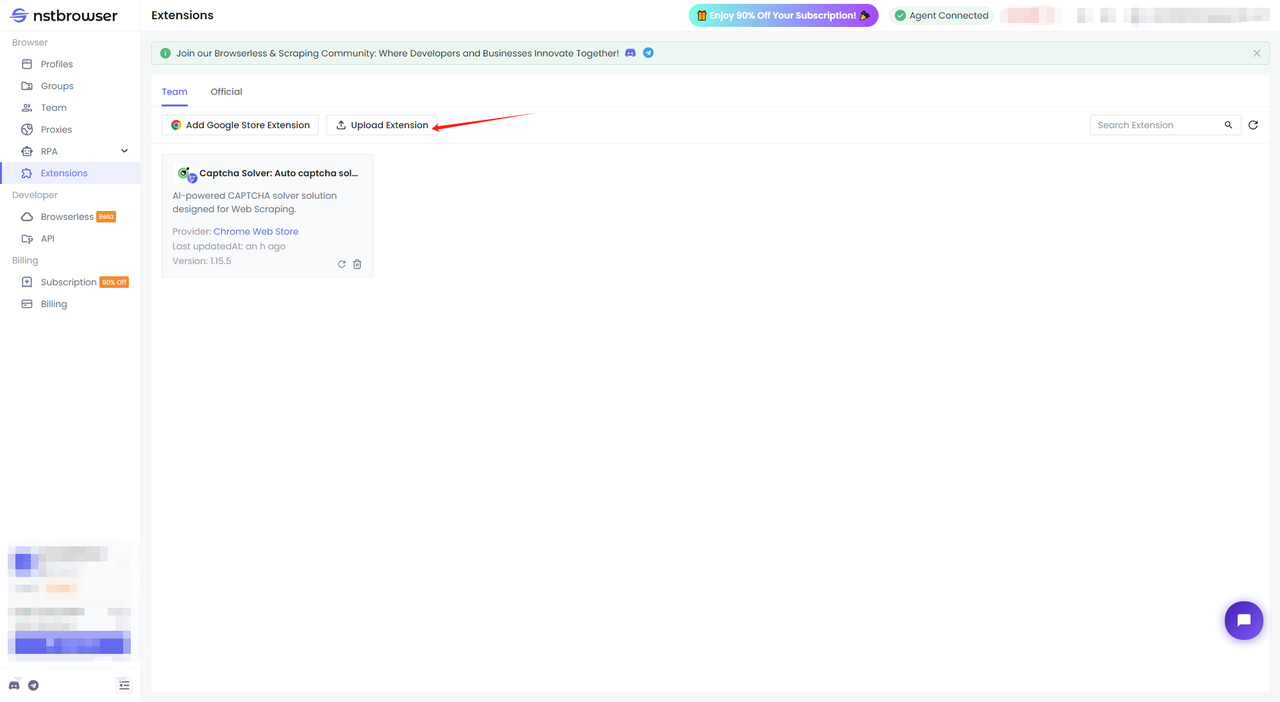
- Select the compressed file of the extension you need (currently, only ZIP format is supported).
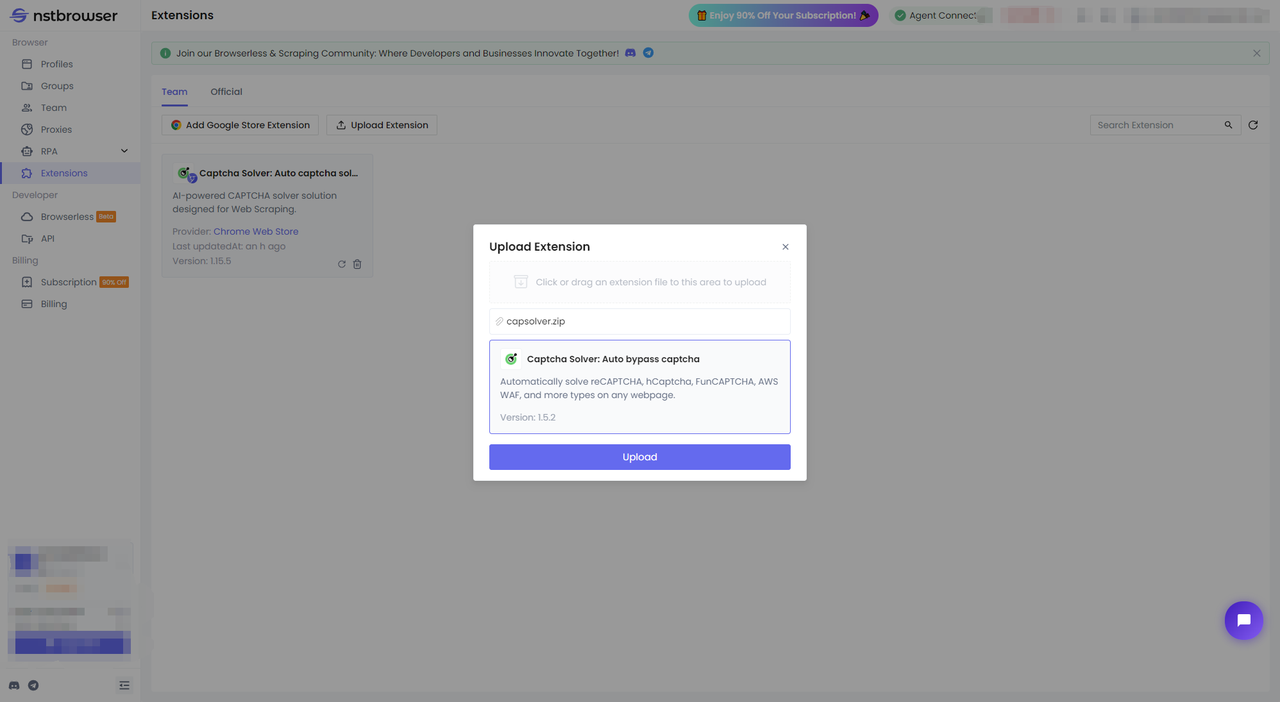
Step 2: Create a Group
- Create a new group.
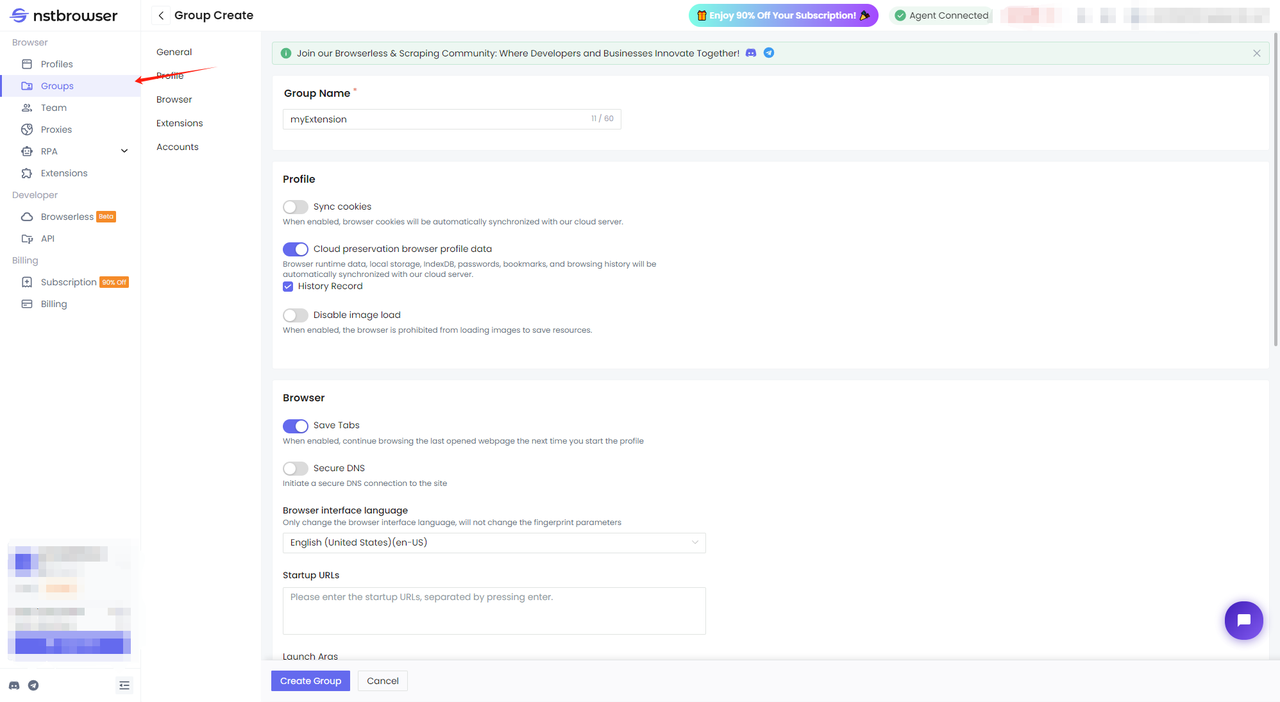
- Check the uploaded extension.
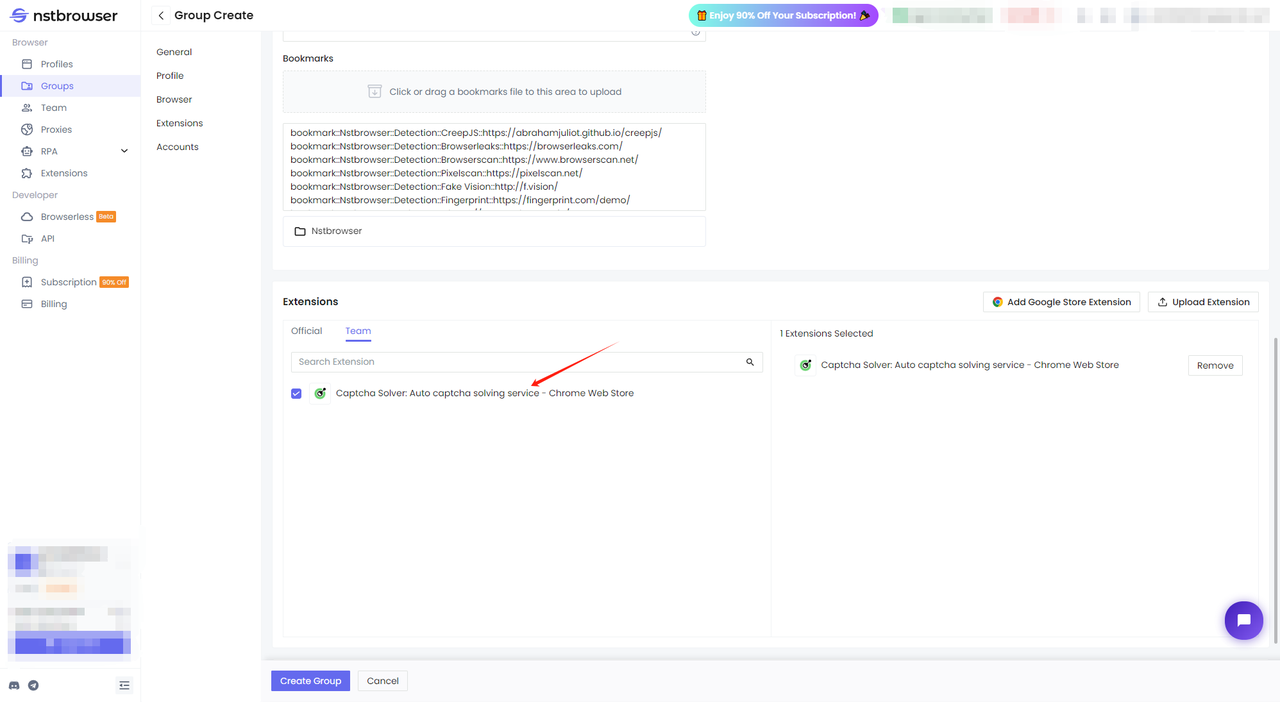
Step 3: Create a Profile
Create a profile within the current group.
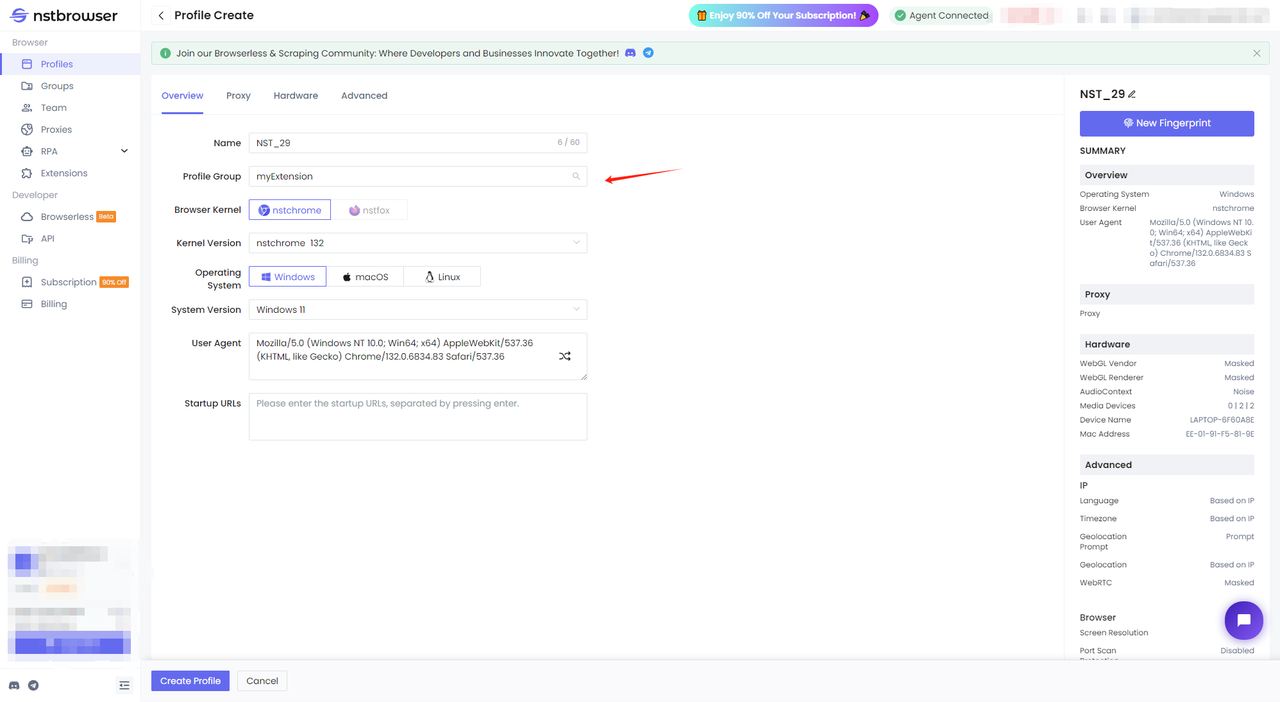
After launching, you will see that the extension has been successfully loaded.
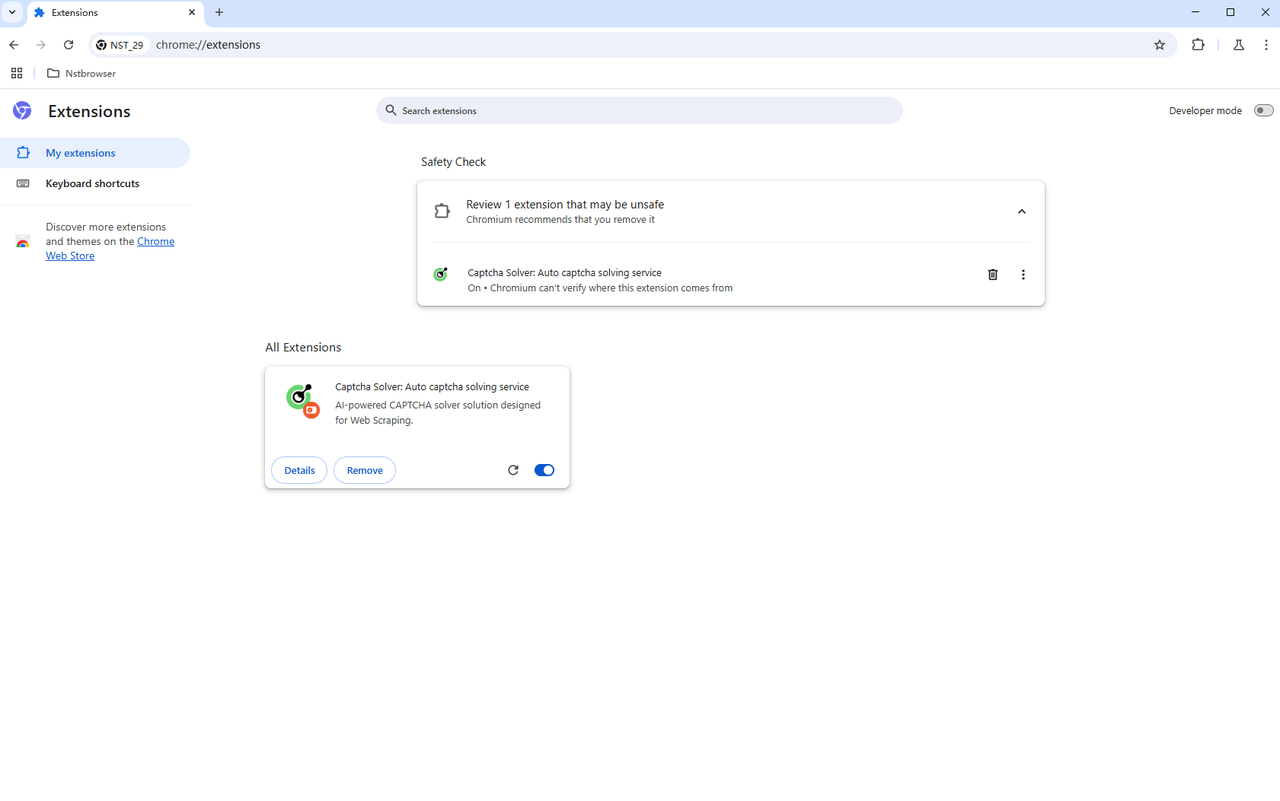
Step 4: Launch in Nstbrowser Docker
- Pull the Nstbrowser Docker image and start the container:
Bash
docker pull docker.io/nstbrowser/browserless:latest
Bash
docker run -d -it \
-e TOKEN=API_KEY \
-p 8848:8848 \
--name nstbrowserless \
nstbrowser/browserless:latest- Connect to Nstbrowser Docker via Puppeteer and capture a screenshot of the extensions:
JavaScript
import puppeteer from "puppeteer-core";
async function execPuppeteer(browserWSEndpoint) {
try {
const browser = await puppeteer.connect({
browserWSEndpoint: browserWSEndpoint,
defaultViewport: null,
});
const page = await browser.newPage();
await page.goto("chrome://extensions");
await page.screenshot({ fullPage: true, path: "extensions.png" });
await browser.close();
} catch (err) {
console.error(err);
}
}
async function createAndConnectToBrowser() {
const browserWSEndpoint = `ws://127.0.0.1:8848/devtool/launch/d924280c-f5d1-4017-9bba-947a35afe0dd`;
await execPuppeteer(browserWSEndpoint);
}
createAndConnectToBrowser().then();After running the above code, you will see an image of the extension list in Docker.
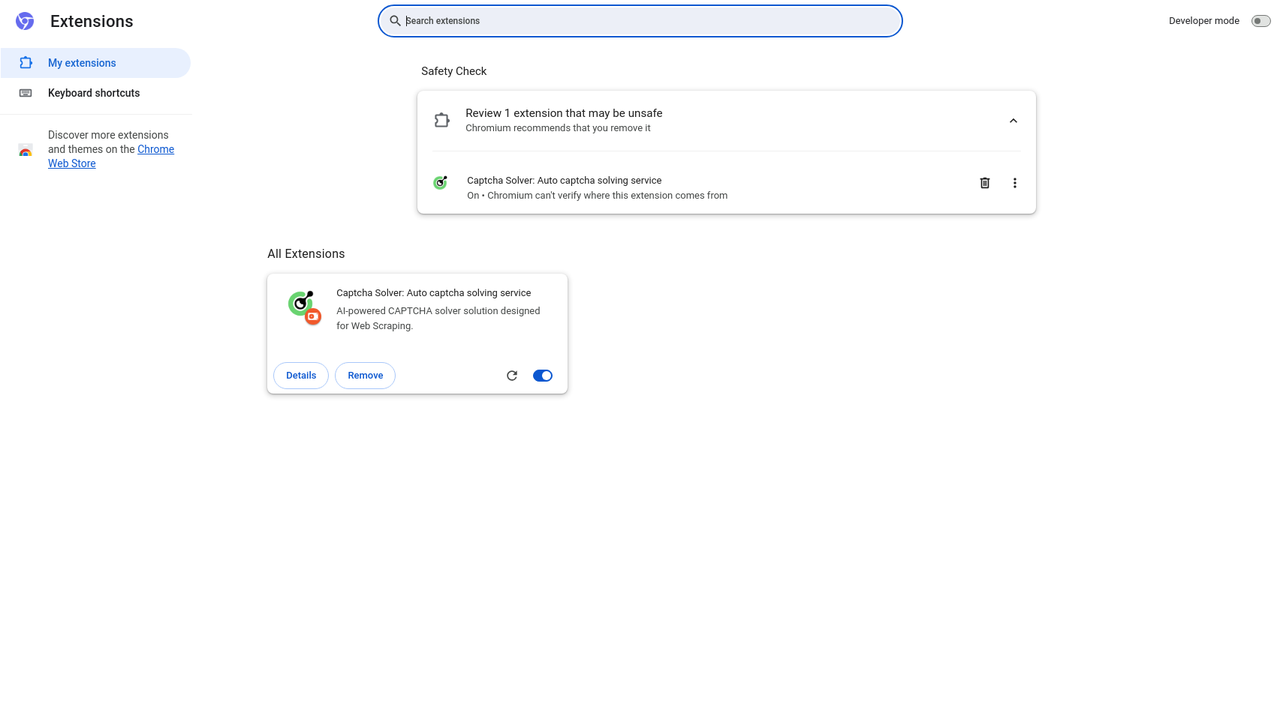
Now, you can use your browser extensions in Nstbrowser Docker.
Summary
Nstbrowser Docker allows users to easily leverage the powerful features of Nstbrowser on any service with a Docker environment by sharing data with Nstbrowser. It enables quick and efficient execution of various browser automation tasks and supports the use of browser extensions within the container.
Nstbrowser Docker also supports cloud-synced data, allowing seamless data sharing between Docker and the Client or between Docker instances, significantly reducing the cost of data sharing.
Try it for free now to learn more about the features of Nstbrowser and Nstbrowser Docker!
Additional Resource
More






